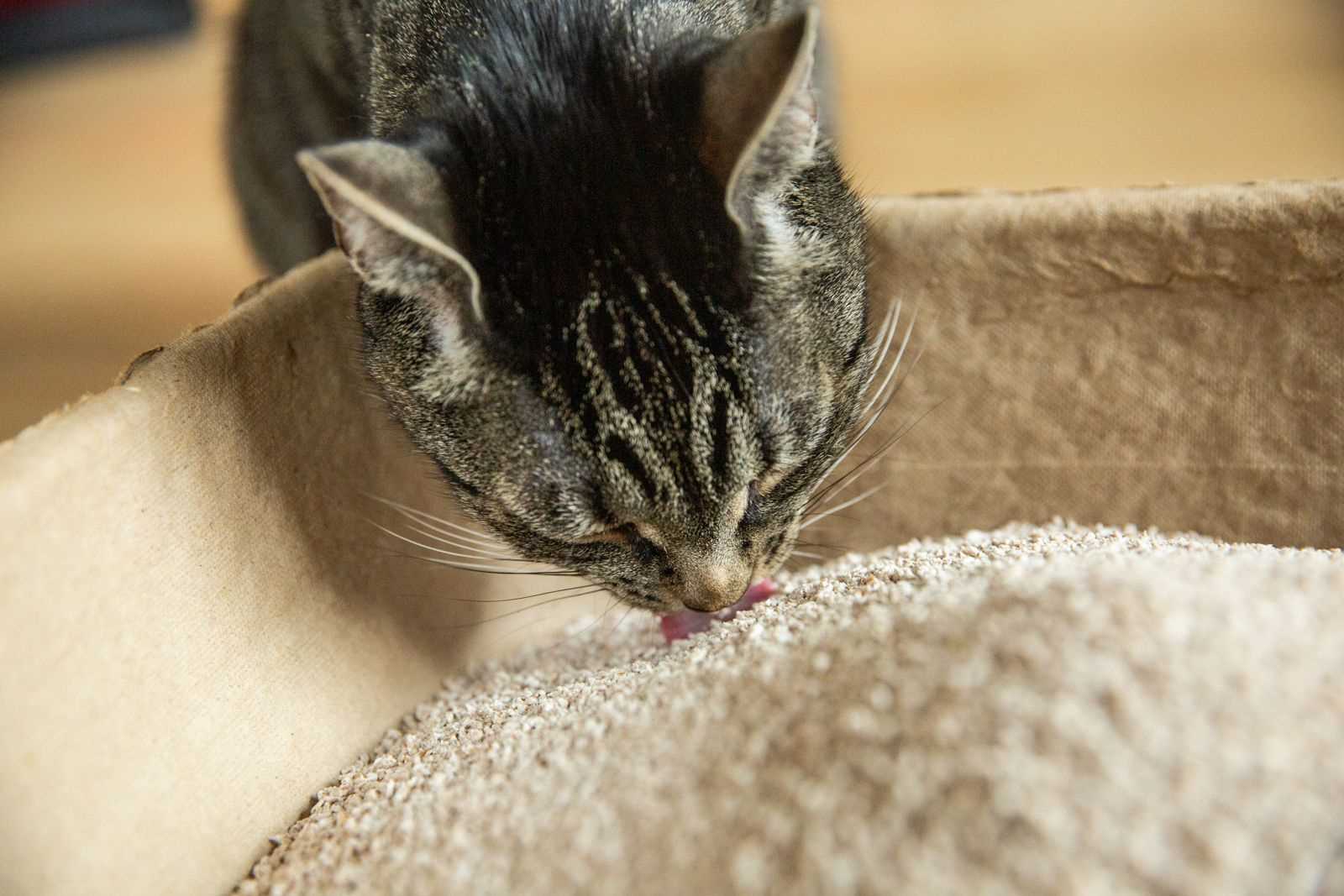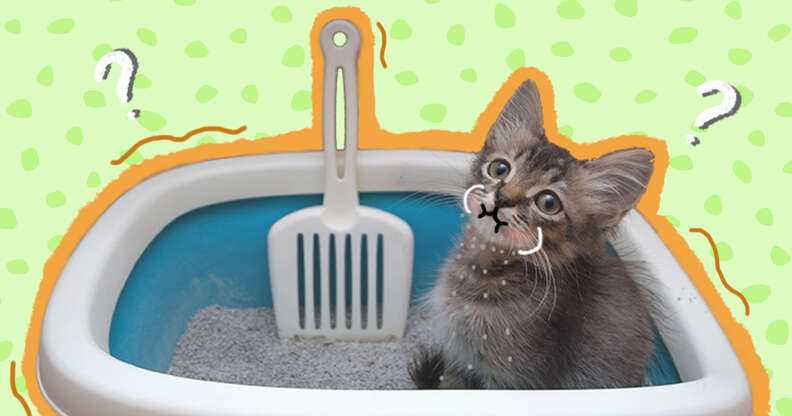



As an 8-year-old Scottish Fold with my own online presence, I often encounter concerns from fellow furry friends and their humans about why some of us find the granules in our boxes so tempting. The first step is to ensure the choice of substrate is safe and non-toxic. Some materials can contain harmful additives that might attract curious noses.
Another factor could be the texture. Many of us are driven by tactile experiences, and certain litter types may feel inviting under our paws and noses. If the feel of the substrate is particularly appealing, it might lead to unusual behaviors. Switching to a more natural or softer option can help if this is the case.
Health issues can also play a role in this quirky habit. Digestive problems or nutritional deficiencies might push a feline to seek out alternative sources of fiber or minerals. A quick check-up with the vet can clarify any underlying health concerns that need to be addressed.
Finally, boredom can lead to odd habits. Engaging playtime, new toys, or even a fresh environment can redirect attention away from less desirable activities. Keeping our minds stimulated and our bodies active is key to a happy life!
Understanding Pica in Cats

Addressing the issue of non-food item consumption requires immediate attention. It can stem from various causes including nutritional deficiencies, behavioral problems, or medical conditions. A thorough veterinary examination is essential to rule out underlying health issues.
Common Causes

- Nutritional Deficiencies: Lack of specific vitamins or minerals can lead to unusual cravings. Ensuring a balanced diet is crucial.
- Behavioral Factors: Boredom, anxiety, or stress can trigger this behavior. Engaging playtime and environmental enrichment may help alleviate these feelings.
- Medical Conditions: Issues such as gastrointestinal disorders or parasites might contribute. Regular check-ups are important to maintain health.
Recommendations
- Consult a veterinarian for a proper diagnosis.
- Evaluate and improve the dietary plan to ensure nutritional adequacy.
- Increase interactive play and provide stimulating toys to reduce boredom.
- Monitor behavior and environment for stressors that may need to be addressed.
- Consider behavioral therapy if needed, under professional guidance.
Taking these steps can help mitigate this behavior and promote overall well-being. Always prioritize health by seeking professional advice when concerns arise.
Common Types of Cat Litter and Their Ingredients
Choosing the right substrate is crucial. Here are some common types:
Clumping Clay: Made from sodium bentonite, this option forms solid clumps when wet, making clean-up easier. It’s highly absorbent but may contain silica dust, which can be irritating.
Non-Clumping Clay: Typically made from clay minerals like kaolin or attapulgite, it absorbs moisture without clumping. It’s less expensive but requires more frequent changes to maintain hygiene.
Biodegradable Options: These are crafted from natural materials such as corn, wheat, or recycled paper. They’re eco-friendly and often less harmful if ingested, but may not control odors as effectively as clay-based litters.
Crystal Litter: Composed of tiny crystals made from sodium or silica, this type absorbs moisture without clumping. It lasts longer and is low in dust but can be uncomfortable for sensitive paws.
Wood Pellets: Made from compressed sawdust, these pellets break down into sawdust when wet. They are biodegradable and absorb odors well, although they may require a more extensive cleaning process.
Understanding the ingredients can help in making informed choices. If you ever need tips on maintaining a clean environment, check out how to lower carbonate in fish tank.
Health Issues Associated with Litter Consumption
Experiencing unusual dietary choices can lead to various health concerns. Ingestion of non-food items often results in gastrointestinal blockages. If the situation persists, it may warrant a visit to the veterinary professional for appropriate diagnostics.
Another risk involves toxicity, especially when the substrate contains harmful chemicals or fragrances. Common clumping agents used in some brands can cause distress if ingested, leading to symptoms such as vomiting or lethargy.
Parasites can also be a hidden danger. Some litter types, particularly those made from natural materials, may harbor unwanted organisms. Regular veterinary check-ups can help catch these issues early.
Behavioral aspects might stem from nutritional deficiencies. A lack of certain minerals or vitamins could trigger an urge to seek alternative sources. Ensuring a balanced diet is crucial for overall well-being.
Stress or anxiety can manifest in peculiar habits, prompting the need for environmental enrichment. Observing changes in behavior can serve as a vital indicator that something might be amiss.
Prompt attention to these signs can prevent more severe complications. Regular monitoring and consultation with a trusted veterinarian can aid in maintaining health and happiness.
Behavioral Reasons Behind Litter Consumption
Engaging in this peculiar activity often stems from boredom. A lack of stimulation can lead to exploration of unconventional materials. Providing diverse toys and interactive playtime can redirect this behavior effectively.
Stress and anxiety play significant roles as well. Changes in environment, new pets, or disruptions in routine can trigger such actions. Creating a safe space with familiar items can alleviate these feelings, promoting healthier habits.
Curiosity drives many of us to investigate unusual textures and scents. If the substrate is particularly appealing, it may become a target for exploration. Introducing different types of play and sensory experiences can satisfy this instinct without resorting to unwanted materials.
Social learning is another factor. Observing companions engaging with similar substances might encourage imitation. Ensuring a positive role model or companion can help mitigate this behavior.
Lastly, some individuals might develop habits simply out of habit itself. Consistency in providing alternatives and redirecting focus can help break these cycles. Establishing routines and engaging activities will be beneficial in promoting healthier behaviors.
How to Discourage Your Cat from Eating Litter
Switch to a different substrate. Opt for a type that has a less appealing texture or scent. Some options, like crystal or wood pellets, can deter interest due to their distinct characteristics.
Enhance environmental enrichment. Provide more toys, scratching posts, and interactive play sessions to keep my mind engaged. Boredom often leads to exploring unwanted habits.
Monitor stress levels. Create a calm environment by minimizing loud noises and sudden changes. Stress can trigger unusual behaviors, so maintaining a peaceful space is key.
Adjust feeding routines. Ensure I receive nutritious meals at regular intervals. Sometimes, hunger can drive me to seek alternatives, so proper feeding can help reduce that urge.
Consult with a veterinarian. Professional advice can uncover underlying health issues or behavioral concerns that may need addressing. A vet’s guidance is invaluable in creating a tailored approach.
Use deterrents. Spraying a bitter-tasting substance around the litter area can make it less inviting. However, ensure that any product used is safe and non-toxic.
Limit access. If the problem persists, consider restricting my access to the litter box when unsupervised. This can break the habit until the underlying issues are resolved.
Track progress. Keep a journal of behaviors and any changes implemented. Observing patterns can help refine strategies to effectively discourage this behavior.
When to Consult a Veterinarian About Litter Eating
If you notice any unusual behaviors, such as persistent consumption of non-food items, it’s crucial to seek veterinary advice. Signs indicating a need for professional help include a lack of appetite, weight loss, vomiting, or diarrhea. Monitor for any symptoms of distress or discomfort. If your furry friend seems lethargic or develops gastrointestinal issues, do not hesitate to book an appointment with a vet.
Behavioral Changes
Keep an eye on behavioral alterations. If your pet becomes more anxious or displays obsessive tendencies towards ingesting materials, it’s time to consult an expert. A veterinarian can assess whether this behavior stems from nutritional deficiencies or underlying psychological issues.
Dietary Concerns
Consider the nutritional balance in your companion’s diet. An inadequate intake of essential nutrients might lead to unusual cravings. Discuss dietary options with your vet, including safe alternatives such as the best fish for cats with kidney disease to ensure a well-rounded meal plan.










